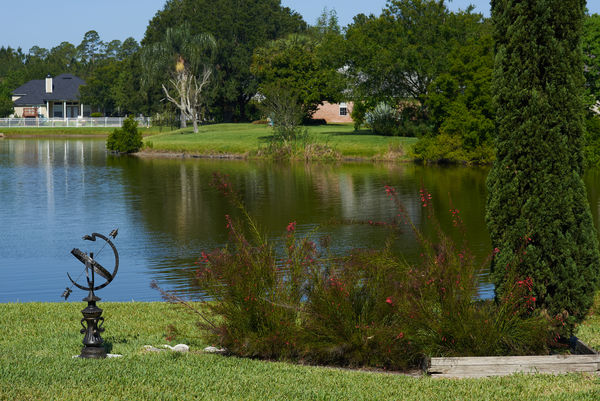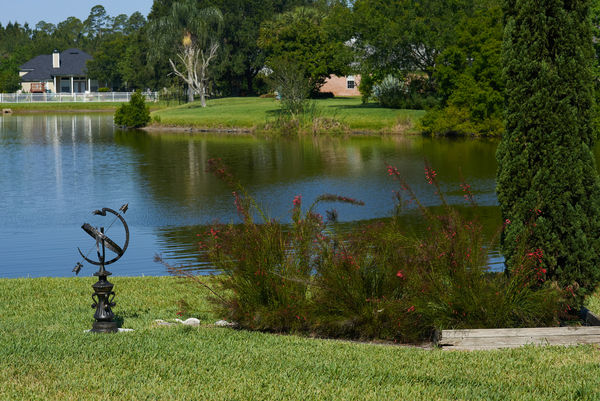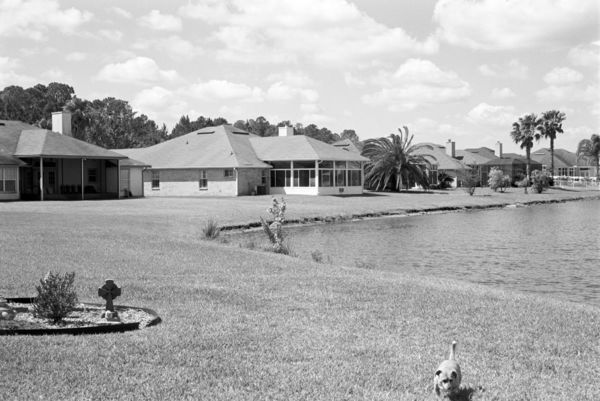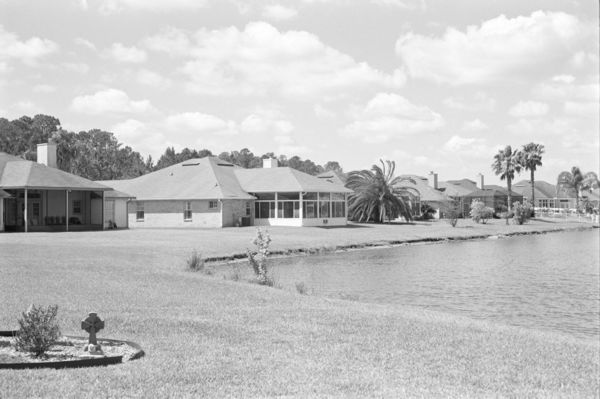Incident, Reflected or No Meter Reading At All
May 7, 2017 12:42:37 #
If you are troubled by the differences between incident light metering and reflected light metering that requires constant vigilance and adjustments to exposure compensation (EC), consider the consequences of ditching them both. It’s not as wacky as it sounds.
There are plenty of situations where the light is constant or nearly constant. This includes broad daylight and even partly cloudy situations. Even brightly lit nighttime scenes have deliberately consistent light.
Take a look at Exposure value. An exposure value (EV) is a combination of shutter speed and aperture. It is independent of ISO. An exposure of 1/250 at f/11 is an EV of 15 regardless of whether the ISO is 100 or 6400.
The article suggests workable EV values at ISO 100 for a variety of scenarios from broad daylight to moonlight and even darker. You can convert from ISO 100 to a higher ISO by adding one to the EV for every doubling of the ISO. For example, EV 15 at ISO 100 becomes EV 18 at ISO 800.
A few random shots should quickly tell you if you are in the ballpark for the correct exposure. If you base your exposure on the brightest situation that does not blow your highlights and lock it in, it is likely that you can continue to use that exposure and then make adjustments when post processing your raw file. Recovering as much as two stops of underexposure is not likely to generate any serious issues. This is because a digital camera at low ISO has a lot of dynamic range.
Negative film at low ISO also has a lot of latitude, a similar concept. I will cover that in a separate post.
There are plenty of situations where the light is constant or nearly constant. This includes broad daylight and even partly cloudy situations. Even brightly lit nighttime scenes have deliberately consistent light.
Take a look at Exposure value. An exposure value (EV) is a combination of shutter speed and aperture. It is independent of ISO. An exposure of 1/250 at f/11 is an EV of 15 regardless of whether the ISO is 100 or 6400.
The article suggests workable EV values at ISO 100 for a variety of scenarios from broad daylight to moonlight and even darker. You can convert from ISO 100 to a higher ISO by adding one to the EV for every doubling of the ISO. For example, EV 15 at ISO 100 becomes EV 18 at ISO 800.
A few random shots should quickly tell you if you are in the ballpark for the correct exposure. If you base your exposure on the brightest situation that does not blow your highlights and lock it in, it is likely that you can continue to use that exposure and then make adjustments when post processing your raw file. Recovering as much as two stops of underexposure is not likely to generate any serious issues. This is because a digital camera at low ISO has a lot of dynamic range.
Negative film at low ISO also has a lot of latitude, a similar concept. I will cover that in a separate post.
May 7, 2017 12:46:52 #
In the example below, the first image was taken according to the Sunny 16 rule which is usually stated as 1/ISO at f/16. Since it was taken at f/11 and ISO 250, I used 1/500 sec, the same EV as Sunny 16. The second image was taken at 1/2000, two stops underexposed, and the exposure was brought back up in post processing. The results are virtually indistinguishable.
Theoretically the second image should have been noisier but because the ISO was so low it can't be seen.
Theoretically the second image should have been noisier but because the ISO was so low it can't be seen.
Base Sunny 16 exposure - ISO 250, 1/500 @ f/11

(Download)
Two stops underexposed - ISO 250, 1/2000 @ f/11

(Download)
May 7, 2017 12:51:09 #
selmslie wrote:
If you are troubled by the differences between inc... (show quote)
I admire your effort but today Exposure Compensation is the sole mean to control exposure. You will see if a camera that doesn't have an easy to use EC would be blame and one with the EC right on the right thumb is praised. It has become the primary mean to control exposure.
May 7, 2017 13:01:13 #
With negative film the opposite holds. You can't underexpose without losing shadow detail but you can usually overexpose without losing highlight tonality if the film has enough latitude. You might get a slight improvement in the grain with overexposure but you usually get more shadow detail.
In the following example I used Fuji Neopan Acros which has an ISO of 100. I was using a yellow filter so the Sunny 16 exposure would have been 1/60 at f/16.
The other difference with film is that, unlike digital, the response curve is not perfectly straight and proportional to the amount of light reaching the film. Some slight curves adjustment could have resulted in getting the images to be nearly indistinguishable, other than in the shadow detail.
Both were scanned without intervention using the Coolscan's autoexposure to account for the difference in film density.
In the following example I used Fuji Neopan Acros which has an ISO of 100. I was using a yellow filter so the Sunny 16 exposure would have been 1/60 at f/16.
The other difference with film is that, unlike digital, the response curve is not perfectly straight and proportional to the amount of light reaching the film. Some slight curves adjustment could have resulted in getting the images to be nearly indistinguishable, other than in the shadow detail.
Both were scanned without intervention using the Coolscan's autoexposure to account for the difference in film density.
May 7, 2017 13:03:54 #
BebuLamar wrote:
I admire your effort but today Exposure Compensation is the sole mean to control exposure. You will see if a camera that doesn't have an easy to use EC would be blame and one with the EC right on the right thumb is praised. It has become the primary mean to control exposure.
Changing the EC when in auto mode is just an indirect way to change the aperture or shutter speed.
If you are using manual exposure, EC only moves the meter reading. Changing the aperture or shutter speed directly changes the exposure.
May 7, 2017 15:48:13 #
selmslie wrote:
Changing the EC when in auto mode is just an indirect way to change the aperture or shutter speed.
If you are using manual exposure, EC only moves the meter reading. Changing the aperture or shutter speed directly changes the exposure.
If you are using manual exposure, EC only moves the meter reading. Changing the aperture or shutter speed directly changes the exposure.
It's helpful when you are looking for zone 8 highlights - you set the EC, look for the highlights in A or S mode and just lock it in with AE Lock (I have programmed the Fn button to do that because I use BBF on the D800). It has made my life much easier when shooting birds that are constantly moving in and out of shade, tree cover, etc. It even works with manual, but you have to be constantly adjusting either one or both dials.
May 7, 2017 16:57:17 #
Gene51 wrote:
It's helpful when you are looking for zone 8 highlights - you set the EC, look for the highlights in A or S mode and just lock it in with AE Lock (I have programmed the Fn button to do that because I use BBF on the D800). It has made my life much easier when shooting birds that are constantly moving in and out of shade, tree cover, etc. It even works with manual, but you have to be constantly adjusting either one or both dials.
If you are used to it and can make it work, great, but pretty soon you are going to run out of fingers.
I can find exposure zone 8 when I want to. Its the one that is full of blinkies when I am exposing manually. To be sure I am not blowing the highlights I just lower the exposure until they go away and then increase it no more than 2/3 stop. What I am left with is blinking that I know is within exposure zone 8 but not beyond it.
Alternately I can leave the exposure alone and get the same result by adjusting the ISO but that just changes the gain and it's the same thing that happens in post when you move the "Exposure" slider.
As for stuff moving in and out of shadows, I just base my exposure on the sunlit version and either change the exposure when I need to for the shadows or just leave it alone and change it in post.
The point of this thread is that an underexposure of one or two stops is easily corrected during raw conversion if you start with a reasonably low ISO.
May 7, 2017 18:13:44 #
selmslie wrote:
... The point of this thread is that an underexposure of one or two stops is easily corrected during raw conversion if you start with a reasonably low ISO.
To be more specific, the point is that if you are going to develop from raw (or if you are using negative film) you don't have to obsess over exposure. Either medium has more than enough latitude so long as you don't blow the highlights in digital or block up the shadows in negative film.
It's when you are only capturing a JPEG or shooting slide film where you have to pay close attention to the exposure. That's probably where many of us got into the habit of getting the exposure just right and addicted to auto exposure and exposure compensation.
May 7, 2017 18:45:58 #
selmslie wrote:
Changing the EC when in auto mode is just an indirect way to change the aperture or shutter speed.
If you are using manual exposure, EC only moves the meter reading. Changing the aperture or shutter speed directly changes the exposure.
If you are using manual exposure, EC only moves the meter reading. Changing the aperture or shutter speed directly changes the exposure.
I am seeing a trend. People would use the camera in manual mode. The aperture setting is for DOF (often to get and near to zero DOF as possible). The shutter speed setting is for either freeze motion or to convey motion as in waterfall pictures. The ISO is on Auto so the camera still automatically set the exposure. If the exposure set by the camera isn't what wanted then the EC is used. That the way I see people using cameras today. So all your long posts are good but only people who already knew what they are all about would pay any attention to them. Others just don't care. I do admire your effort but at UHH it's rather a waste of your time.
May 7, 2017 19:44:50 #
BebuLamar wrote:
I am seeing a trend. People would use the camera i... (show quote)
Exposure compensation changes either aperture, shutter speed or ISO. Not everyone uses auto exposure. To do so requires that you use exposure compensation.
Exposure compensation is not necessary. If you use full manual exposure you can get around the cameras meter and fully control your exposure. You just need to know how to expose and when it matters.
Is that clearer?
May 7, 2017 20:27:28 #
selmslie wrote:
Exposure compensation changes either aperture, shutter speed or ISO. Not everyone uses auto exposure. To do so requires that you use exposure compensation.
Exposure compensation is not necessary. If you use full manual exposure you can get around the cameras meter and fully control your exposure. You just need to know how to expose and when it matters.
Is that clearer?
Exposure compensation is not necessary. If you use full manual exposure you can get around the cameras meter and fully control your exposure. You just need to know how to expose and when it matters.
Is that clearer?
I do understand what you mean but you don't understand what I meant. What I meant that today so few care about real manual mode. They set manual mode to get the aperture and shutter speed they want but let the camera determine exposure and set the ISO. If the result is too bright or too dark they would then use the EC. What you try to explain few people care and those who do already knew that. So what you did is futile while admirable.
May 7, 2017 21:14:00 #
BebuLamar wrote:
I do understand what you mean but you don't understand what I meant. What I meant that today so few care about real manual mode. They set manual mode to get the aperture and shutter speed they want but let the camera determine exposure and set the ISO. If the result is too bright or too dark they would then use the EC. What you try to explain few people care and those who do already knew that. So what you did is futile while admirable.
Some use aperture priority with fixed ISO leaving shutter speed to vary by spinning the EC dial. A few set aperture and shutter speed and let ISO vary as they spin the EC dial. Others might set the shutter speed and ISO and let aperture vary as they spin the EC dial.
What they all have in common is that, by resorting to exposure compensation, they are acknowledging that the camera's meter is not giving them the exposure they actually want. They are having to use exposure compensation to compensate for the shortcomings of the cameras reflected light meter.
Nearly every image I have seen image posted here uses auto exposure with some amount of exposure compensation. This suggests that every one of these images is the second or third attempt to get the exposure right. That just seems to be a waste of someone's time.
May 7, 2017 21:20:14 #
You can see that nobody post anything in this thread except Gene and I. Gene which I believe know all those stuff already and so do I. People who may not know would not care about what you post. Like the guy who exposed his shot at EV18.
May 8, 2017 04:45:39 #
BebuLamar wrote:
You can see that nobody post anything in this thread except Gene and I. Gene which I believe know all those stuff already and so do I. People who may not know would not care about what you post. Like the guy who exposed his shot at EV18.
You may feel that I am preaching to the choir but there is no way of knowing how many in the congregation are learning something new.
At least I am posting clear and reproducible evidence rather than opinion and anecdotal samples.
Feel free to Unwatch.
May 8, 2017 08:22:34 #
This back and forth is NOT a waste of time. It is a valuable learning experience for those of us who feel that as much as we may already know, we still have a lot to learn from others.
Kudos to selmslie. Well done.
Kudos to selmslie. Well done.
If you want to reply, then register here. Registration is free and your account is created instantly, so you can post right away.




